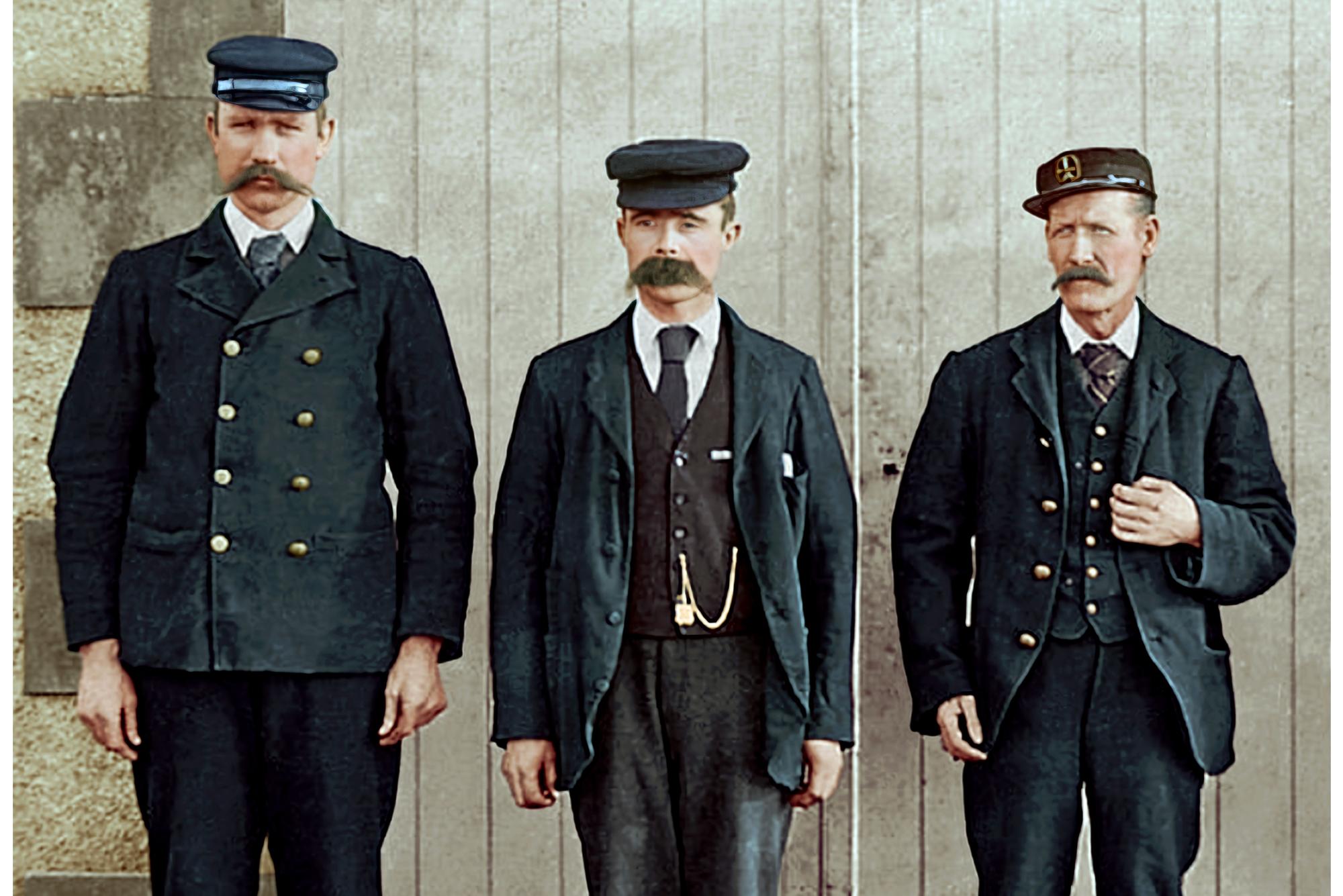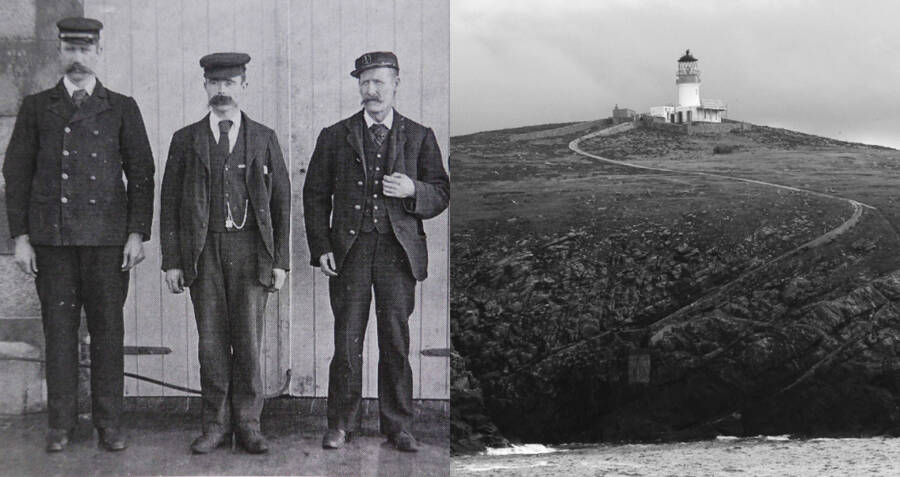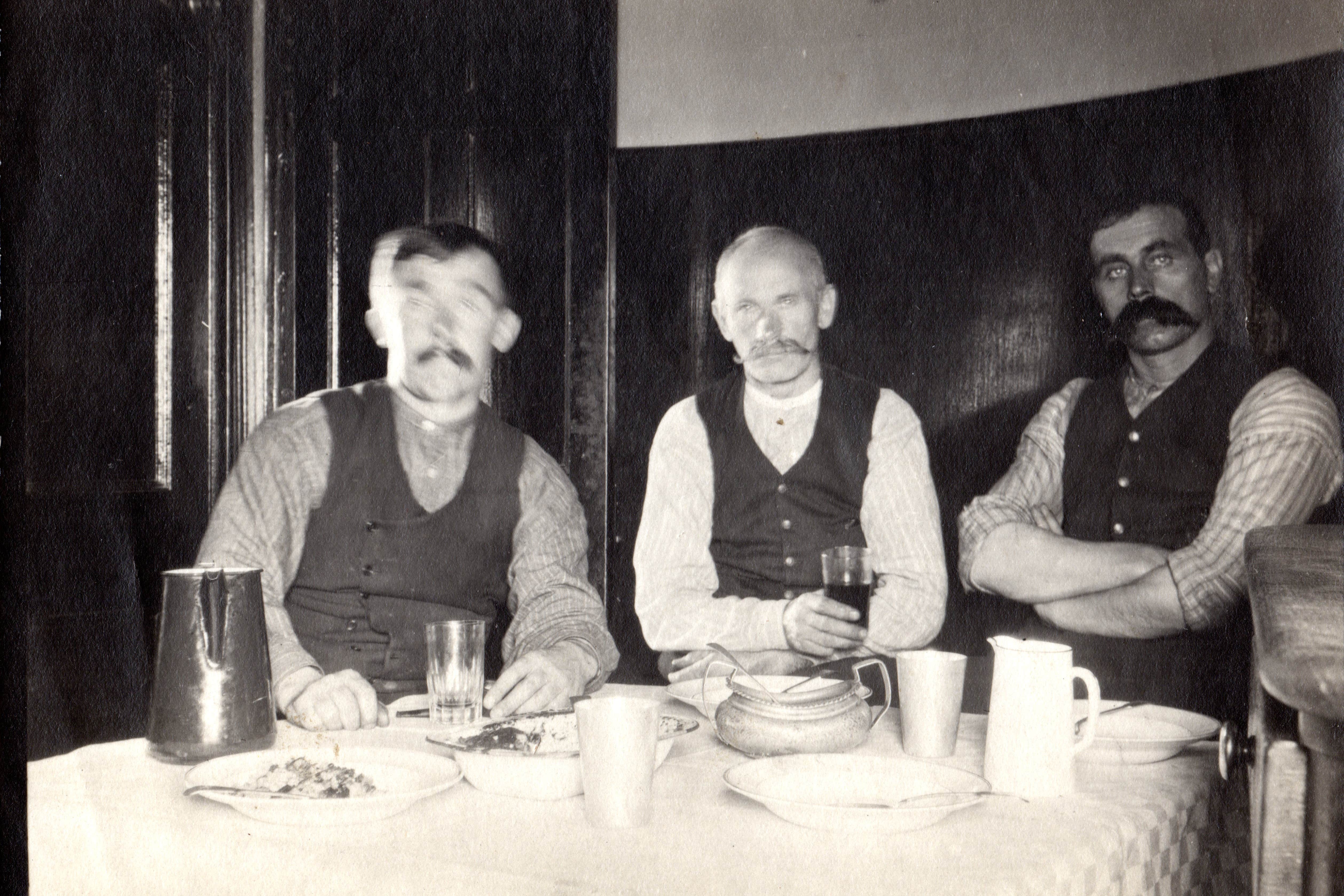On the night of December 15, 1900, the steamship Archtor was on its voyage from Philadelphia to the port of Leith when it passed by the Flannan Isles. The crew noticed something unusual: the lighthouse on the island was not shining as it should. When they arrived in Leith three days later, they reported the matter to the Northern Lighthouse Board.


Upon receiving the news, the Board dispatched the lighthouse relief ship Hesperus to investigate. When the ship arrived on December 26, Captain Jim Harvie sounded the horn and fired a flare, hoping to alert the three lighthouse keepers—James Ducat, Thomas Marshall, and William MacArthur. But there was no response. Relief keeper Joseph Moore was sent ashore and climbed the 160 steep steps leading to the lighthouse. Inside, he found an eerie scene: the clock on the wall had stopped, the dining table was set but the meal remained untouched, a chair had been overturned, and the only sign of life was a canary in a cage.
Moore hurried back to report his findings to Captain Harvie. Two more sailors were sent ashore to assist with the search, but there was no trace of the three men. The only clue left behind was a set of oilskins, suggesting that at least one of them had ventured out in only his shirtsleeves.
At the western landing platform, the search team found evidence of a recent powerful storm. A supply box had been smashed open despite being positioned over 30 meters (100 feet) above sea level. Iron railings were bent out of shape, a section of railway track had been torn from its concrete moorings, and a massive rock weighing more than a ton had been displaced. Even the turf on the cliffs, 60 meters (200 feet) above sea level, had been ripped away. Yet, the three lighthouse keepers had vanished without a trace.

Captain Harvie speculated that they may have been swept into the sea while trying to secure equipment. Before leaving, he assigned Moore and three sailors to remain on the island to maintain the lighthouse and continue searching, but no further clues emerged.
On December 29, inspector Robert Muirhead arrived to conduct an official investigation. He was well acquainted with all three missing men and identified the abandoned oilskins as belonging to MacArthur. Examining the storm damage, Muirhead concluded that Marshall and Ducat likely went out into the storm to secure supplies but never returned. MacArthur, concerned for his colleagues, may have followed them, only to meet the same tragic fate.

However, the public was not satisfied with this explanation, and wild theories began to circulate. Some claimed that the men had been attacked by a giant sea creature or carried away by an enormous seabird. Others believed they had fled the island to escape debts or had been abducted by foreign spies—or even the ghostly crew of a phantom ship.
Another controversial detail emerged years later: a supposed logbook written by Marshall, describing an unprecedented storm, Ducat’s unusual silence, and MacArthur—known for his rough demeanor—weeping in fear. A later entry allegedly recorded the three men praying amid the storm, and a final entry on December 15 stated that the storm had passed and all was calm. If the men had died, how could someone have written that last entry? This cast further doubt on the theory that they had been swept out to sea.
However, journalist Mike Dash later debunked the logbook entries, proving they had been fabricated years after the event.
Three main theories have since emerged regarding the disappearance:
- A violent fight broke out among the keepers, leading to a fatal accident.
- One of them—likely MacArthur—murdered the others before taking his own life.
- The most plausible theory: Marshall and Ducat were swept away while trying to secure equipment, and MacArthur met the same fate when he went to search for them. This theory is supported by the fact that Marshall had previously been fined for losing equipment in a storm, which may have led him to risk his life rather than face another penalty.
The true fate of James Ducat, Thomas Marshall, and William MacArthur may never be known. Whether by accident, misadventure, or something more sinister, the Flannan Isles Mystery remains one of the most baffling enigmas in Scottish maritime history.
